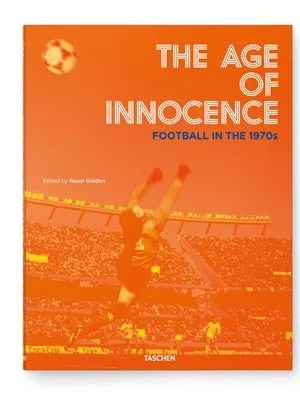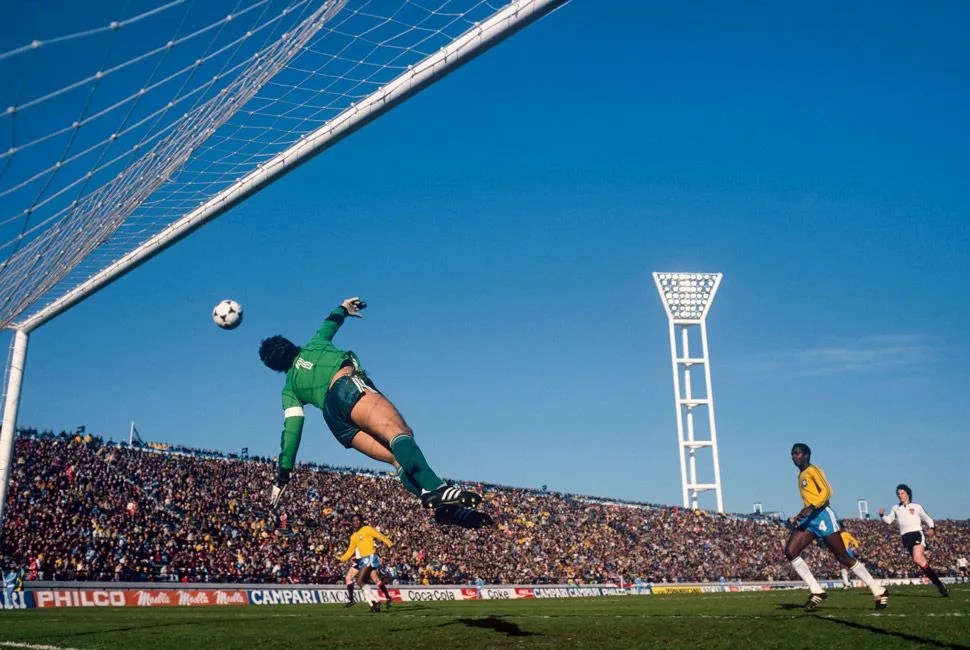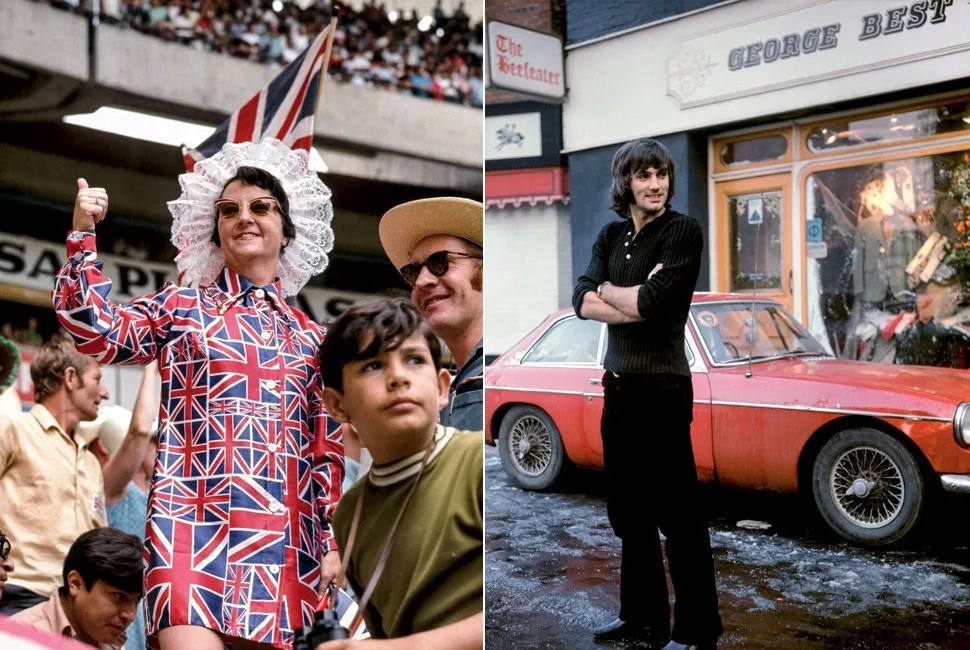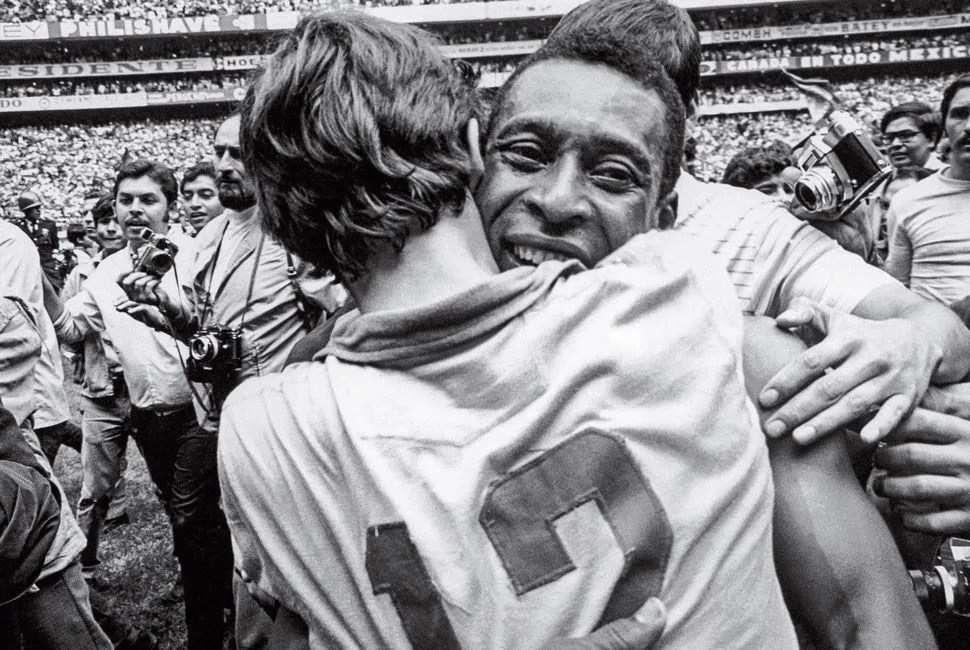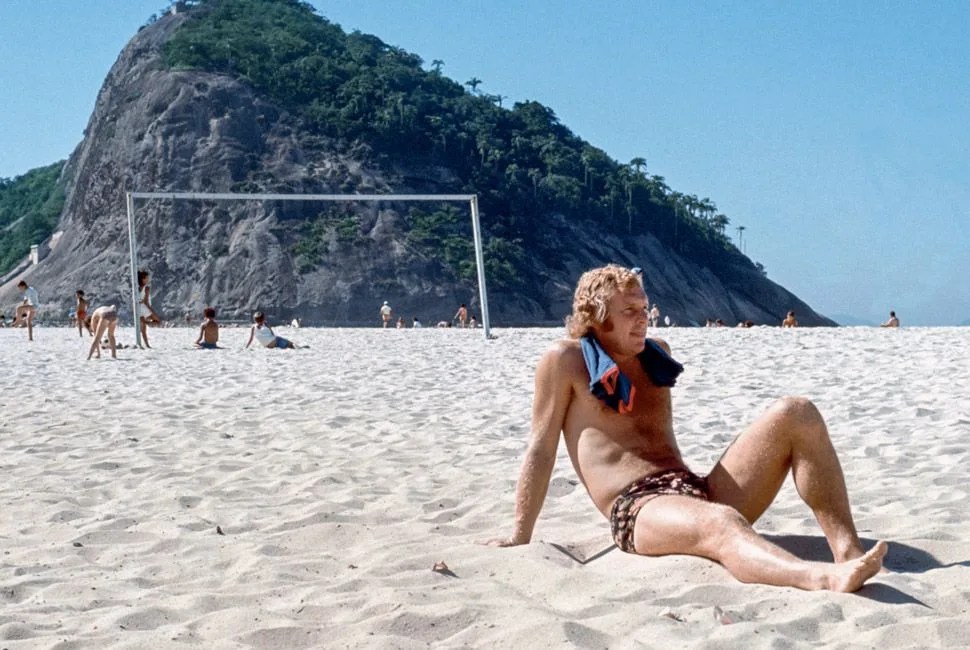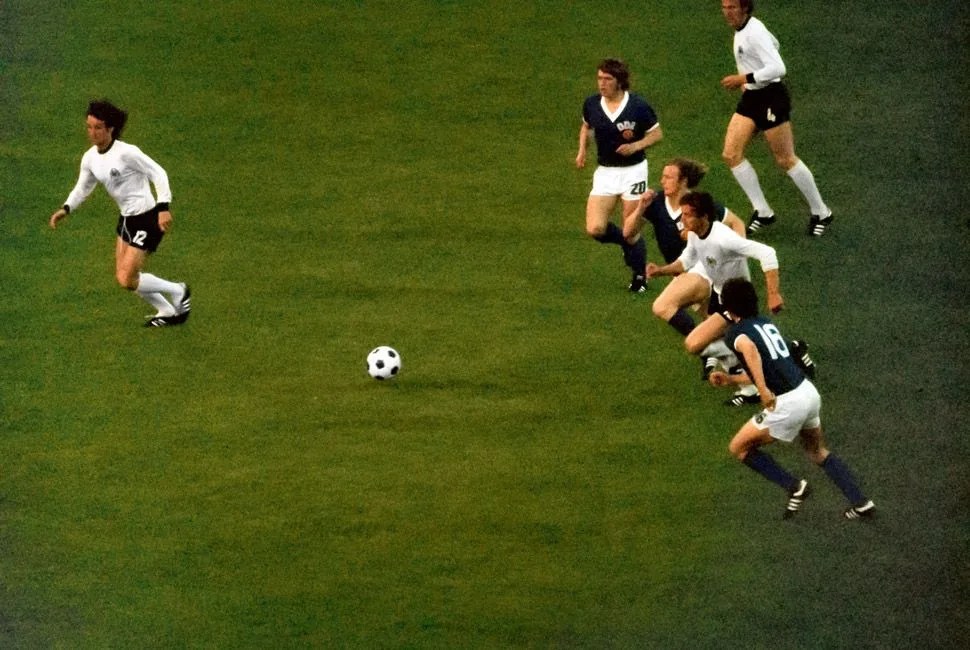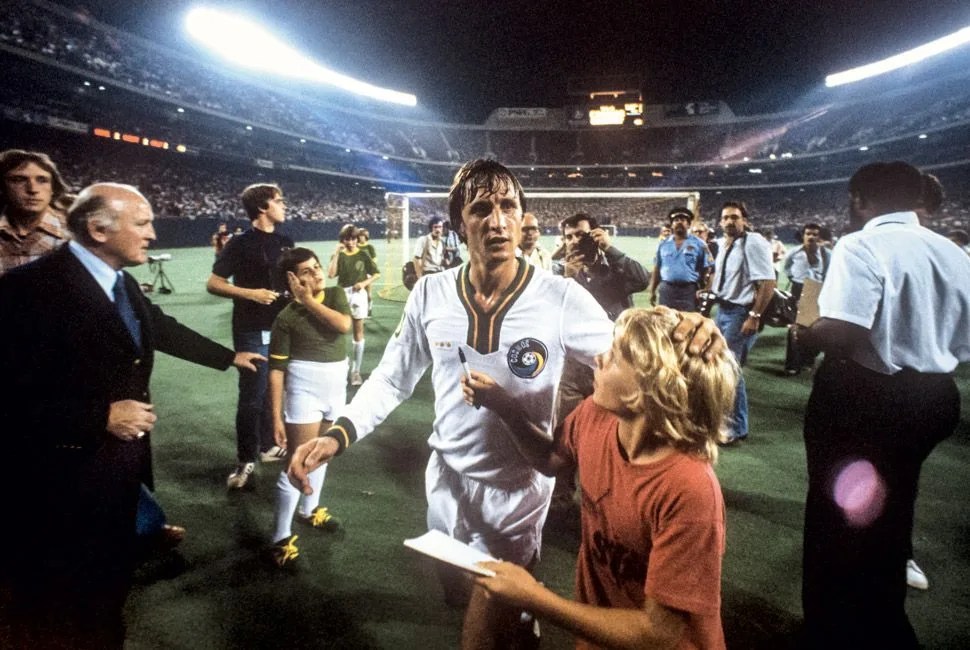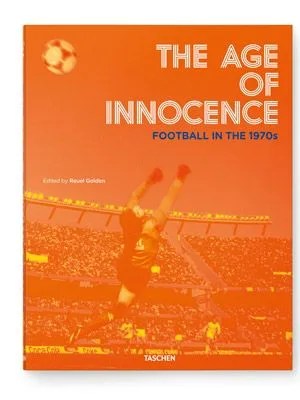6 photos
“I spent a lot of money on booze, birds and fast cars”, reflected George Best, a Manchester United legend. “The rest I just squandered.” This famous quote captures the essence of The Age of Innocence: Football in the 1970s, a photographic eulogy for soccer’s first international superstars — Pelé, Franz Beckenbauer, Bobby Moore, Maradona, Johan Cruyff —and how they molded the “beautiful game”. The book showcases the world’s love affair with their lives, on and off the pitch. From their girlfriends, vintage cars, questionable fashion and athletic heroics, these players’ spirits are still prevalent today.
Athletes were different in the ’70s. They were accessible. The veil today’s celebrities hide behind — agents, endorsements and public sensitivity — wasn’t drawn so tightly, so players had more freedom to be candid and raw (in a way that didn’t involve drunken tweets). The legends of the ’70s were just like Messi, Neymar and Ronaldo, except you’d be more likely to grab a beer with them. The book’s editor and former editor of the British Journal of Photography, Reuel Golden, has edited similar works about Queen Elizabeth II, The Rolling Stones and The Beatles. We asked Reuel about the process of putting the book together, the extravagant lifestyle of the time and why this golden age of European soccer demands remembrance.
MORE GP INTERVIEWS: 30 Minutes With Eric Wallace and Brett Joyce | 30 Minutes With Aaron Hadlow | 30 Minutes With Alastair Humphreys
Q. What was the impetus for the book?
A. Well, we felt like it’s the world’s most popular sport and the World Cup was coming up in Brazil. We had never done a football book, and certainly never a soccer book. But I thought an interesting approach would be to focus on a decade because it would show the game in a different context. It would also be about the decade itself, so it would have sort of a cultural aspect to what we were covering. It’s a little bit like we’re moving the camera away from the soccer fields and focusing on the lifestyle, the culture, the fashion, the girlfriends, the cars — of the 1970s.
Q. Why the 1970s?
A. The main thing about the 1970s is there was the World Cup in Mexico in 1970. And that was the first time the World Cup was televised live in color and it was when the game became really global for the first time. It was in an era where you had these fantastic national teams like the Brazil team in 1970, West Germany, the Netherlands, and club teams like Ajax and Munich. You had these very charismatic players who were becoming the first wave of soccer superstars. The game was becoming very popular, but it still kind of low key. The players weren’t surrounded by agents, and lawyers, and sponsors; there wasn’t the control that there is now. But it’s not like everything in that decade was perfect. There were hooligans and racism. It wasn’t this perfect age, but it was more innocent compared to now. And the game itself was very entertaining; it was more free flowing and less kind of cynical.
The ’70 World Cup was in Mexico. The ’74 World Cup was in West Germany. And the ’78 World Cup was in Argentina. They were all very different, but all were in football-mad countries. And it’s these three World Cups that dominate the narrative of the book.
